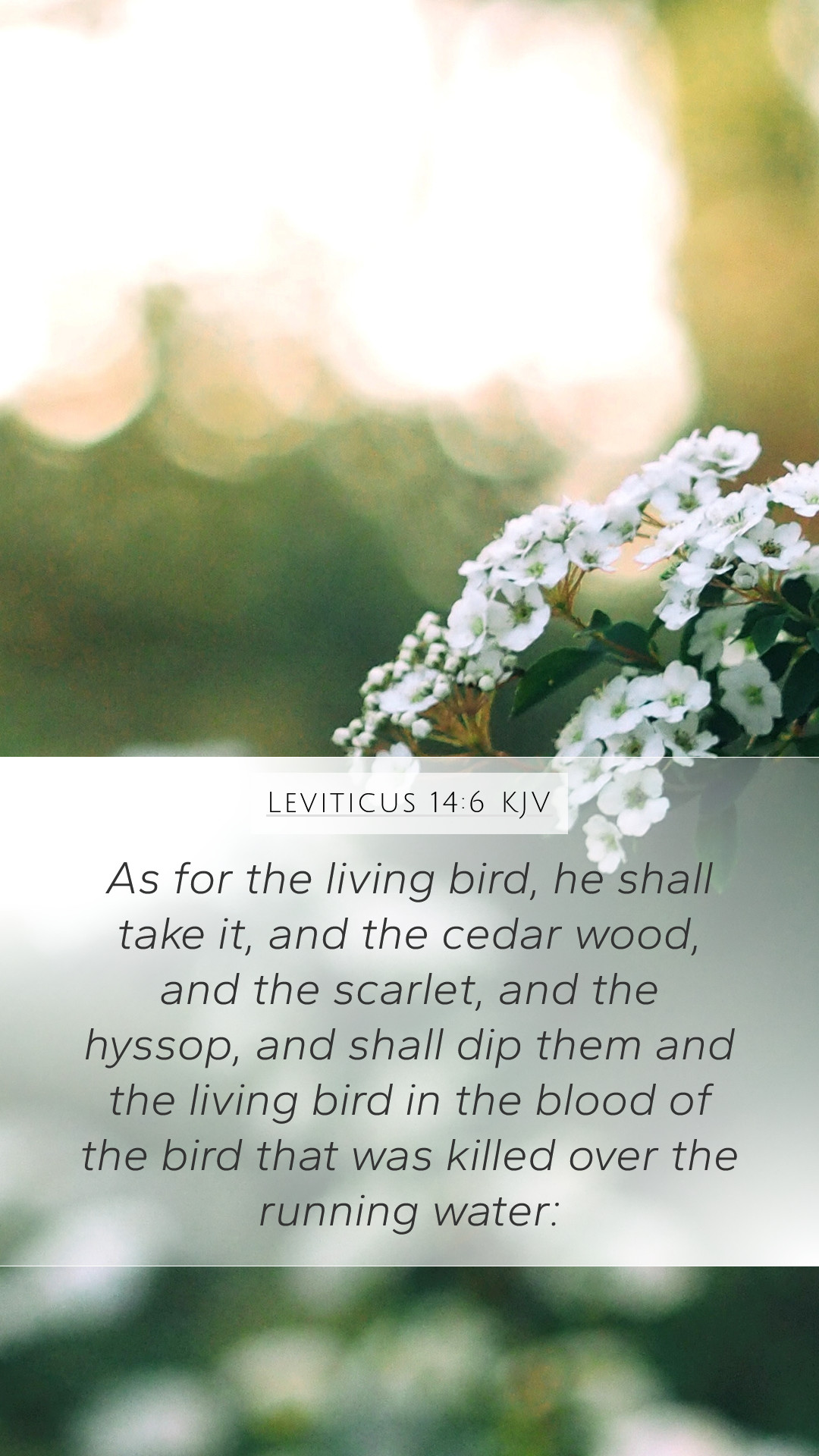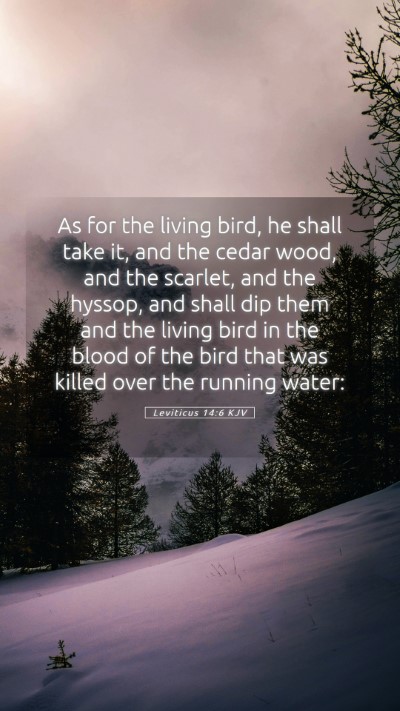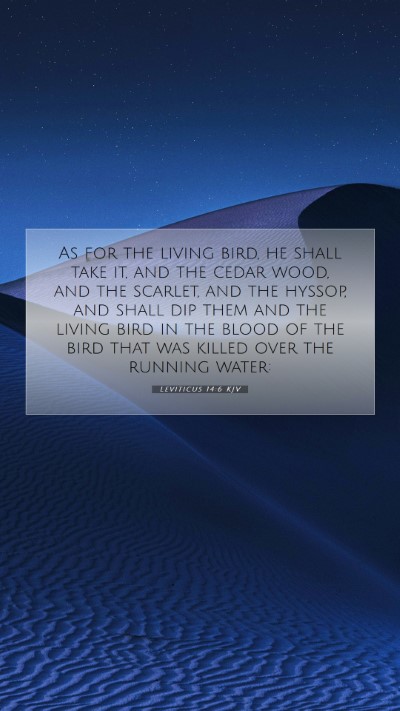Understanding Leviticus 14:6
Leviticus 14:6 states:
"As for the living bird, you shall take it with the cedar wood and the scarlet string and hyssop, and dip them and the living bird in the blood of the bird that was killed over the running water."
Bible Verse Meaning and Context
This verse is part of the ceremonial law given to the Israelites concerning their purification process after being healed of leprosy. The use of two birds, one killed and one released, is deeply symbolic.
Significance of the Two Birds
- Killed Bird: Represents atonement and sacrifice, signifying the death required for cleansing.
- Living Bird: Symbolizes freedom and restoration. When it is released, it illustrates the believer's new life after sin has been dealt with.
Symbolic Elements Involved
The elements listed in this verse—the cedar wood, scarlet string, and hyssop—carry significant weight in biblical interpretation:
- Cedar Wood: Known for its durability, representing strength and life.
- Scarlet String: Often associated with sacrifice, representing the blood of Christ.
- Hyssop: Used for purification, linking to the concept of cleansing from sin (exodus and psalms), demonstrating a need for inner purity.
Commentary Insights
According to Matthew Henry, the actions combining these elements symbolize the believer’s dual aspect of faith—both the recognition of sin and the subsequent cleansing through Christ.
Albert Barnes emphasizes that this ritual not only shows the seriousness of sin but also illustrates God’s mercy in providing a means of restoration.
Adam Clarke points out that the blood on the living bird portrays the act of transferring guilt away, an early representation of Christ's ultimate sacrifice for humanity's sins, linking this practice to future New Testament fulfillment.
Bible Verse Interpretations
Theological Implications
This verse connects Old Testament practices with New Testament teachings. The ritual serves as a precursor to the understanding of salvation and the necessity of Christ's sacrifice. It demonstrates God's plan for humanity’s redemption from sin.
Practical Applications
For modern readers, Leviticus 14:6 calls for reflection on personal purification, the importance of atonement, and the assurance of forgiveness. It encourages believers to seek cleansing in their lives through Jesus Christ.
Cross References
- Exodus 12:22: The use of hyssop during the Passover to apply the blood on doorposts.
- Psalms 51:7: "Purge me with hyssop, and I shall be clean"; a prayer for cleansing.
- Hebrews 9:22: "Without the shedding of blood there is no remission"; underscores the importance of sacrifice.
Conclusion
Leviticus 14:6 encapsulates vital principles of sin, atonement, and the cleansing work of God. By understanding this scripture, believers can grasp the depth of divine mercy and the significance of ritual in connecting humanity with God’s redemptive plan.
Further Study
For those interested in deeper study, consider looking into relevant Bible study resources such as:
- Bible study guides focusing on Old Testament rituals.
- Online Bible study platforms offering courses on sacrificial practices.
- Group discussions in Bible study groups that revolve around ceremonial law and its applications today.


